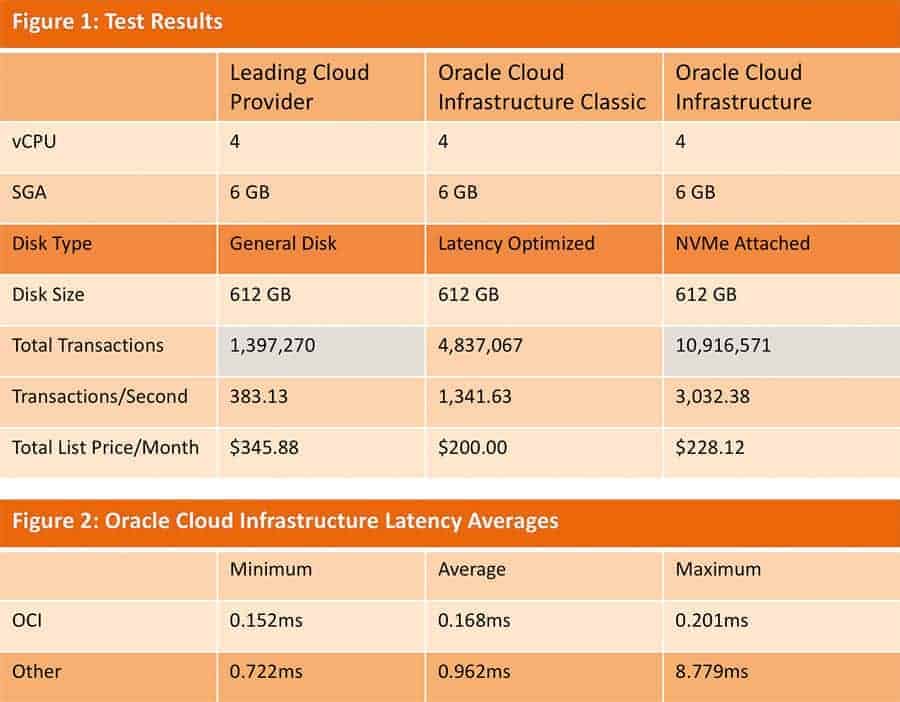SAP in the Oracle Cloud


The certification and release of the central SAP NetWeaver component SAP Application Server Abap/Java for Oracle Cloud Infrastructure by the long-standing Oracle partner SAP already took place in the fall of last year.
Now, in April, there was also the release of Exadata-as-a-Service. This means Exadata Database Machines in the cloud. This means that SAP customers can operate their business suite applications with ERP or NetWeaver-based BI, CRM or SCM applications in the Oracle Cloud Infrastructure.
It combines the elasticity or the usage options of an efficiency-enhancing public cloud with those of an on-premise infrastructure that is geared towards high performance, high availability and cost-efficient infrastructure services. Just as you would expect from Oracle.
Oracle Cloud Infrastructure represents one element of the broad Oracle Cloud solution offering, which is known to include PaaS (Platform as a Services) or SaaS (Software as a Service).
In the context of Oracle Cloud Infrastructure, diverse core infrastructure resources are provided on a subscription basis according to Infrastructure-as-a-Service principles.
For example, flexibly usable compute and storage services, so that companies can use very different workloads advantageously and securely in the form of cloud services. Database services with the market-leading database from Oracle can also be connected.
The majority of all SAP customers worldwide from very different industries - whether from the midsize environment, large or the largest companies - continue to use the Database from Oracle for SAP, Exadata Database Machine for SAP or numerous other Oracle innovations or products and solutions to drive their business or optimize their IT.
Even in times of increased digitization and despite SAP Hana or S/4. The commitment remains that Oracle will continue to support Business Suite customers with its solutions for SAP as long as SAP supports the Business Suite. And now new: the use of SAP in the Oracle Cloud Infrastructure together with the proven Oracle Database for SAP.

Use Cases, Enterprise Use
Oracle's Cloud Infrastructure offerings are designed for SAP customers with NetWeaver-based applications for different use cases: for the fast and cost-saving provision of test and DEV systems as well as for the use of QA and PROD systems without separate hardware investments or the complex management of different infrastructure components.
Or also: for the setup and operation of a disaster recovery solution based on Oracle Database for SAP, test and deployment of Oracle 12c In Memory Option, Oracle Multitenant Option and much more.
Plus points here: All Oracle-based SAP applications can be operated in Oracle Cloud Infrastructure with all customizing settings, which ensures that investments made remain protected.
At the same time, this opens up scope to drive innovation - for example, in the context of digitalization projects. For example, other Oracle offerings from the broad cloud services portfolio can be used within the framework of cloud initiatives, such as mobile integration services, blockchain services or AI services.
Oracle's focus as a best-in-class cloud provider in the context of enterprise applications deployment is that cloud computing is effectively the same as on-premise:
high performance, the usual operational/governance and security requirements, high-quality infrastructure support including database optimization, sufficiently high cost transparency, or recourse to appropriate management/support services.
Against this background, OCI currently only uses bare metal instances ("a server is a server", without virtualization) or optimized and performance-enhancing IOPS methods with partly unique technologies.
In addition, wide-ranging Oracle ACS services can be accessed, for example, to accompany a migration to the cloud, if desired.
Of course, Oracle supports the concept of cloud usage by section/region. An Oracle cloud data center is located in Frankfurt, for example.
Uncomplicated migration to Oracle Cloud Infrastructure
As is usual in the SAP environment, a certification comprises a defined framework or certain usable rule components have been defined. In the context of the SAP Oracle certification mentioned at the beginning, these are essentially now:
SAP NetWeaver 7.X with Unicode only, SAP-side; Oracle-related the Oracle Database 11.2.0.4., 12.1.0.2 and 12.2.0.1 with all features/options that apply to on-premise (currently excluding RAC and ASM as well as without virtualization), and Oracle Linux 6 or 7 as operating system. (Further or detailed information can be found in SAP Notes 2474949 or 2520061).
Furthermore, beyond the bare metal shapes, ExaCS shapes are also offered: currently as Qurater racks with various configuration levels, from 22 to 84 process cores; based on Oracle Linux 6 and the Oracle database 12.1.02 or 12.2.0.1. Further offerings for half and full racks are being planned. (See SAP Note 2614028 for details).
SAP customers can currently choose from four different cloud standard instance sizes with different memory sizes (256, 512 and 768 GB) and several usable database storage volumes (block storage, 512 TB raw/12.8 TB NVMe and 51.2 TB NVMe respectively) within the framework of Oracle Cloud Infrastructure, which provide a performance of over 72,230 SAPSen. Whereby the BYOL principle (ASFU and Oracle Database Full Licenses) is valid.
A key point in connection with OCI use is database migration. As a rule, this takes place after planning, preliminary work and specifications have been completed, such as setting up an Oracle Infrastructure Account, determining the appropriate workload sizing and bare metal usage or the storage to be used.
SAP Oracle customers can also use several options, procedures or methods for database migration or for the so-called "lift and shift into the cloud" in conjunction with OCI when using or operating source and target platforms with Linux (Linux x86_64).
For SAP customers with another Any-DB who want to use Oracle Cloud Infrastructure, a database migration is recommended beforehand, for which Oracle (ACS Migration Services) or joint Oracle-SAP partners offer support.
The tools or methods for uncomplicated database migration to the Oracle Cloud Infrastructure should be very familiar to all Oracle SAP customers: R3load (SAP), Brspace (SAP), Oracle RMAN, O2O, Triple O and Oracle Dataguard physical standby. When it comes to cloud migration, Oracle SAP customers can also fall back on Oracle's Advanced Customer Services (ACS).
Ahead of the competition
The fact that the Oracle Cloud Services offered in general and the Oracle Cloud Infrastructure Services in particular meet the enterprise user needs in the cloud age without restriction is expressed on the one hand in the increasing cloud revenues that Oracle can record every quarter.
On the other hand, there are independent expert reports which show that Oracle is ahead of the cloud competition. And this in two respects in particular: both in terms of performance and in terms of the subscription costs to be paid.
For example, in its white paper "Enterprise Worksloads Meet the Cloud," Accenture (Technology) notes that "Oracle Cloud Infrastructure experiences about five times lower latency than other cloud providers when using multiple zones or different data centers within a region."
This is attributed to the technologies used by Oracle. Oracle also scores well in other studies, for example from Travedis or Storage Report.
And when it comes to performance, specifically database performance for enterprise-scale deployment with "high-powered" workloads, Accenture specialists conclude that "Oracle Cloud Infrastructure can perform OLTP transactions up to 7.8 times faster compared to other cloud providers."
Accenture also took a close look at cloud subscription costs. In a comparable test case, they were around $200 for Oracle, and around $300 or more than $320 for other cloud giants.
Conclusion
With Oracle Cloud Infrastructure, Oracle offers a powerful and secure cloud offering for demanding SAP customers. Interested customers can take advantage of a "Try it" program, where various offerings can be tried out for themselves.
In addition, various pre-sales services are available for interested customers with concrete plans, such as workshops, sizings, reference architectures or POCs. Available via the responsible account manager.








